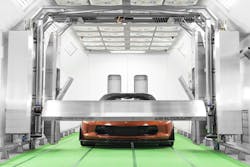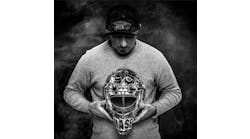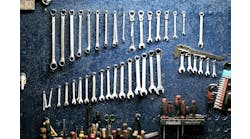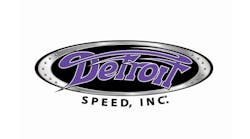“Efficienct is everything.”
We hear it all the time. But what really separates an efficient shop from a shop bogged down with bottlenecks? It’s all in the numbers.
For instance, Beal’s Auto Body & Paint in Prescott, Ariz., can produce 8 to 10 vehicles per day out of its singular paint booth.
Further north, in Shakopee, Minn., the Pearson Auto Body paint team has an average efficiency level of 200, a figure continually growing every year.
Both Tim Beal, owner of Beal’s Auto Body & Paint, and Andy Robinson, general manager of Pearson Auto Body, have worked with their teams to put solid efficiency plans in attack. These strategies help to eliminate any congestion points that may come along the way in the painting process, and attribute to the success of each business.
All Parts, All at Once
One key factor slowing down shops in the painting process could be centered around parts. To ensure each vehicle is completed as quickly and efficiently as possible, every part needs to be accounted for before moving forward in the refinishing process.
“Having the right parts and all of the parts at once is critical,” Robinson explains. “Everything needs to be all together and made sure that they are correct.”
As the industry has moved forward, this strategy has become more and more widely strived for—as it makes the most critical sense, says Robinson. But that doesn’t mean that is always practiced in each shop. For almost all shops and painters, this is easier said than done.
“I’d be lying if I said that it always happens,” he says, “but we aim for it 100 percent of the time.”
Ensuring and verifying all parts are correct and accounted for eliminates any possible back and forth, and breaks down a possible time sucking bottleneck in the process.
Document and Organize
Choreographing how both vehicles and team members move through the shop is critical to being efficient, time- and space-wise.
At Pearson Auto Body, cars go through to the paint department as soon as body techs are done with them. Those vehicles are scheduled out throughout the day, with paint hours being tracked on paper.
“We try to keep up to 100 hours per day through the paint department,” Robinson explains.
For Beal, it’s how he organizes which department team members come in on which day. On Monday, he will have a prepper and a painter come in; on Tuesday through Thursday, he will have two painters and two preppers in the shop for 10 hour days; and on Friday, one prepper and one painter will be in. This allows for his team to work more cohesively and efficiently throughout the week.
His team also schedules how they do work throughout the day differently than most shops, says Beal. Instead of waiting until four to five cars are ready and bundling priming at the end of the day, they instead UV primer one car at a time—turning a two day process into less than a one day process.
Slow Down, Eliminate Repaints
There’s not much more that can slow down a project than having to completely restart—or in the world of refinishing, repaint.
According to Robinson, the Pearson Auto Body paint team has been able to raise their efficiency level by eliminating repaints. He says they were able to make this leap by addressing one of the largest mistakes a painter can make—working too quickly.
“When you try to go too fast you end up with repaints—and doing things twice is never faster,” Robinson explains. “We’ve eliminated a lot of our repaints by simply slowing down.”
Slowing down includes verifying paint colors are 100 percent correct before starting to paint any part of a vehicle. The cleanliness of each part is another factor attributed to repaints and is easily avoided by slowing down.
“This (the cleanliness of the parts) avoids burn throughs and problems that can happen outside of the paint booth as we’re color sanding, buffing, and reassembling the vehicle,” Robinson says.
Speed Up the Waiting Game
One step in the procedure that could allow for speeding up is the drying process.
“I would say that the biggest bottleneck [when it comes to painting], is waiting for stuff to dry in the booth,” Beal says.
In an effort to become more efficient, Beal took this challenge head-on at his shop. He teamed up with another owner and engineering friend, Byron Davis, to develop US AutoCure and the Phoenix 1000, a certified, infrared curing system. According to Beal, this technology can dry a vehicle’s panel within three minutes, and has drastically boosted efficiency at his shop.
“We now have a two-and-a-half hour attack time in our paint shop,” he explains.
This has allowed for the Beal’s Auto Body & Paint team to complete painting over 10 cars a day, and bring in an annual revenue of 4.4 million dollars out of one single paint booth.
Sponsored by




